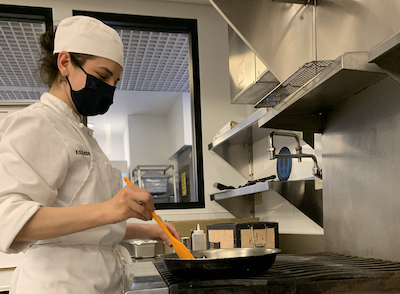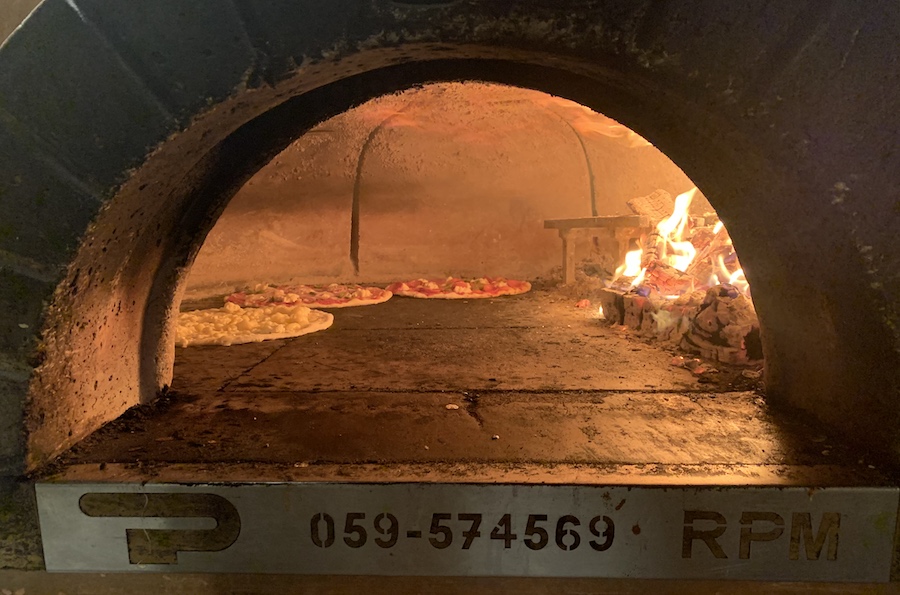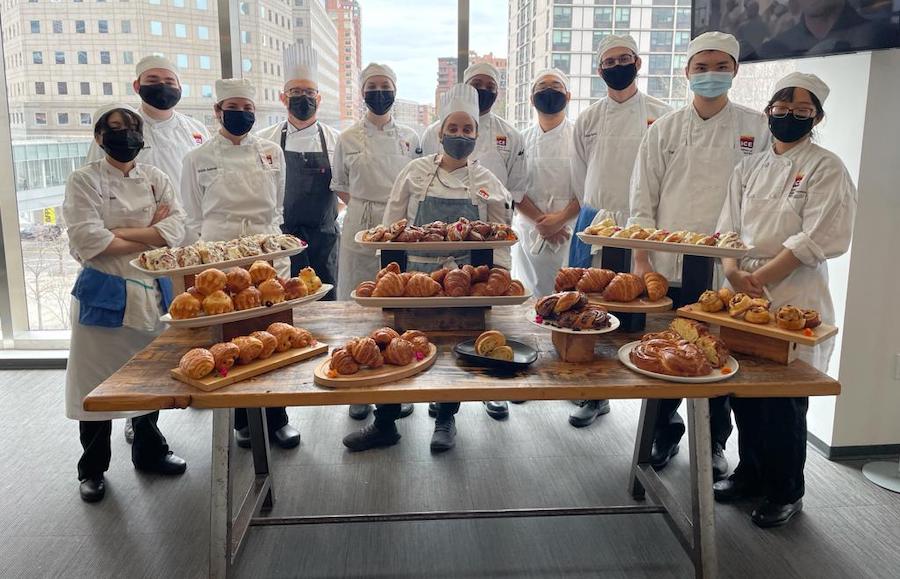Culinary Arts student Kristin Ambrosino went from working at a bank to enrolling in culinary school and initiated her restaurant experience at a popular pizza place from an ICE alum. Here's how the career change is going.
Indoor dining is closed. I have no restaurant kitchen experience. It's 11 a.m. on a pandemic Saturday in December, and I’m walking from my apartment in Brooklyn to my trail at Emily, a popular restaurant with a wood-fired pizza oven in Clinton Hill. Getting a trail was not easy, particularly since I was only one month into my culinary program at the time. Luckily, the owner of two Emily locations and Emmy Squared, ICE alum Matt Hyland (Culinary, '05), accepted my request. As I walk, I’m reviewing the flashcards that I made to memorize the 14 pizza names (e.g. “Lady Pizza Girl”) and the associated toppings (pecorino, harvarti, housemade ricotta, oregano, mushrooms, pickled chilis, fresh basil). This is my first trail, and I’m hoping it will lead to my first job in a restaurant kitchen.

I thought I might have some preparation for the trail because I spent a good amount of time in 2020 making the doughs and pizzas from Ken Forkish’s book, "Flour Water Salt Yeast." It turns out, my experience of making three relatively pizza-shaped pizzas at a time for consumption at home did not prepare me at all for stretching the dough at the restaurant to the perfect size, shape and thinness for 200+ pizzas a night. I struggled to stretch the doughs during that first afternoon, but I nailed the toppings. By the end of the shift, I was offered a part-time job and I accepted.
It was a relief to have gotten through this part of the process, but there were still some lingering fears that I had to work through as I came to the restaurant after Culinary Arts classes and on weekends for my initial shifts. I wondered:
- Am I going to get trapped in the walk-in refrigerator if I let the door close behind me?
- Can I stand for this long?
- Am I going to cut my fingers off if I use the mandolin?
- Will I get electrocuted if I stick the point of a pen into the Robot Coupe to make it work while it is plugged in?
- What if I fall down the stairs when I have to carry a heavy pot or tray of something from the kitchen to the basement?
While these fears may have been unfounded, they stemmed from my prior work experience. Prior to attending ICE, I served as the head of underwriting for a large portfolio at a bank, meaning my job was to identify and evaluate risks. I quickly realized that none of these concerns was an issue. I learned how to consistently and successfully stretch the dough, going by feel to adjust my technique as conditions evolved throughout a given shift with changes in time and temperature. As I progressed through more modules at ICE, I applied the techniques I learned in class, especially as my role expanded to include executing a lot of the prep work and working on the hot line making burgers, wings, etc.
During all of this, I was still working to conquer the wood-fired pizza oven. The concept seems straightforward: Use the pizza peel to slide between the uncooked crust and the marble counter, pick up a pizza, and place it into the appropriate spot in the oven. I quickly saw that this was not the pizza-making that my grandmother had done. For 20 years, she had gone once a week to make pizzas at a restaurant in Pennsylvania called Sabatini’s, which I only learned from my dad after starting this job. According to her, pizza making was simply putting the pizza in one side of the oven and taking it out the other side. At Emily, the pizzas go in and out of the same side. In addition, the oven is solely powered by a pile of burning wood. There are many variables in this rustic form of cooking – oven heat and floor heat are impacted by the size of each log, how warm a log is when it is placed into the oven, how long each one has been burning for, whether it is placed directly on the oven floor or elevated, whether the log is on an upward slope or not. This all changes how the pizzas cook.

The placement of the pizzas in the oven and the dough characteristics also impact how the pizzas cook. For instance, a warm day may cause a lot of bubbles to form in the dough once it is in the oven, and these need to be popped by reaching in with a long hook without poking through the bottom of the crust. The pizzas also don’t sit still the whole time in the oven. They need to be rotated and repositioned to ensure even and correct cooking.
Fire management aside, getting the pizzas in and out of the oven was not easy. I’ve crumpled a pizza into the back wall of the oven when I didn’t realize how fast it was going to come off of the front of the peel. I’ve had a lapse in hand-eye coordination and slammed the peel into the lip of the oven opening, dumping the raw pizza (and all of the thousands of little bits of grated cheese) into the wood bin below. I’ve been too slow pulling the peel out from under a pizza in the oven, stretching it into the oblong shape of a racetrack.

But you know what? Throughout this whole experience, I learned. I made mistakes, I saw others make mistakes, and I saw it be okay. I figured it out. People helped me figure it out. I picked up, placed and cooked four pizzas at a time in the oven, repeatedly, for a full shift. I left the restaurant feeling happy after every shift. I got a raise. When the time came to secure an externship, Matt connected and recommended me to his contacts in the restaurant business. My next step is an externship at the recently Michelin-starred Rezdora, where I am looking forward to learning refined Italian cooking techniques. I am excited to continue to see where my culinary journey takes me.
In case they read this, I want to personally thank Matt, Meg, Sammy, Jack, Shaq, Juan, Dan, Juan Carlos, Jeremy and Deon for a truly amazing first New York kitchen experience.
Start your culinary journey at ICE's New York campus.




